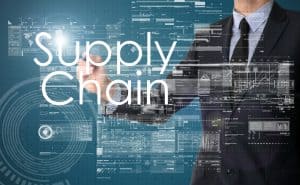
Organizations seeking agility and resiliency in their supply chain must adopt technology to innovate, solve critical supply chain gaps, and improve customer service.
The Biden-Harris administration recently announced its Freight Logistics Optimization Works (FLOW) initiative, which will be implemented to pilot critical information exchange between key stakeholders throughout supply chains. FLOW aims to address the inherent weaknesses that continue to plague America’s supply chains, such as a lack of investment in long-term resilience. While this initiative is a positive step forward for enhancing the supply chain resiliency, it also underlines the increasingly dire need for modernized digital infrastructure and transparency within supply chains.
A general lack of digital infrastructure within supply chains allows issues that impact employees, supply chain partners, and their customers to persist. Thus, organizations must evolve their approach to shock-proof their supply chain against constant volatility and risk. This article will explore why digital infrastructure that provides real-time visibility and intelligence down to the unit level will be vital to enable the current administration’s goals of building resilient supply chains.
See also: Dissecting a Supply Chain’s Digital Twin
The challenges impacting modern supply chains
Amazon’s two-day shipping promise is leading a trend that has caused consumers to change their expectations around how they purchase and receive products, with 90% of consumers stating that two to three-day shipping should be the baseline delivery promise. Customers are expecting shorter lead times, transparency into product arrival, increased customization for their specific preferences and needs, and improved sustainability. Organizations that cannot pivot quickly and provide customers with consistent touchpoints can risk losing customer loyalty and profit to a competitor.
At the same time, supply chains have become greatly interconnected. Numerous partners and suppliers are involved at every step of the way to provide raw materials, transportation services, and more. With supply chains in constant movement, companies are struggling to keep track of their goods and often lose a great deal of profit from product waste. In fact, 40% of all food waste in the United States happens further up in the supply chain. To avoid losing profit either from competition or waste, organizations must continue to innovate with modern technology that exposes gaps and weaknesses within supply chains.
Legacy systems are no match for supply chain disruption
Supply chain executives are dealing with increasing supply chain disruption brought on by economic instability, operational stoppages from resource unavailability, labor shortages, supplier and logistics partner delays, and uncertainty over demand. In fact, although the number of supply chain disruptions worldwide increased by 88% from 2020 to 2021, more than half of organizations still lack end-to-end supply chain visibility and instead rely on legacy data tracking methods, such as hand-drawn pictures of supply chains, to make critical business decisions. These “point in time” approaches are based on outdated information from data silos, lack contextual information, and are not capable of providing real-time updates that share insight into the precise state of goods as they travel through the chain of custody. Furthermore, legacy systems generally only track shipping containers rather than each individual product unit. Legacy systems are causing additional obstacles for business leaders and hinder their ability to achieve supply chain resilience. Decisions must shift from “point in time” to “all the time,” continuously pulling from the ground truth and leveraging technology to model what might occur, driving the best possible outcomes before disruptions cause impacts, thus mitigating as much risk as possible.
Investing in digital infrastructure
Nearly 80% of supply chain leaders state that they must adopt digital planning and operations to increase supply chain visibility and improve their ability to make strategic, well-informed business decisions. It’s evident that the need for modern supply chain technology will only continue to grow as the supply chains becomes more complex. By digitizing their supply chain, business leaders can understand where waste is occurring and how it can be minimized in the future by predicting disruptions before they happen. Furthermore, companies can share real-time updates with their customers on the precise location of their products and expected time of arrival. For instance, digital twin technology can provide an added layer of visibility to supply chains by leveraging data from vendor tracking systems, such as container tilt or temperature, to develop a visual representation of an organization’s supply chain. A digitized view of their supply chain can enable business leaders to create strategic playbooks with “what-if” scenarios and make well-informed decisions ahead of time.
Conclusion
While FLOW is a first step to improving information sharing among stakeholders of supply chains, the flow of goods can be ameliorated with a digital infrastructure that provides real-time insights and enables better preparation and planning for unpredictability and volatility. Government initiatives like FLOW help place further attention on supply chain issues and demonstrate the need for end-to-end visibility from production all the way to the last mile. Organizations seeking agility and resiliency in their supply chains must adopt technology to innovate, solve critical gaps in supply chains, and improve customer service— which are all necessary for today’s operations.





























